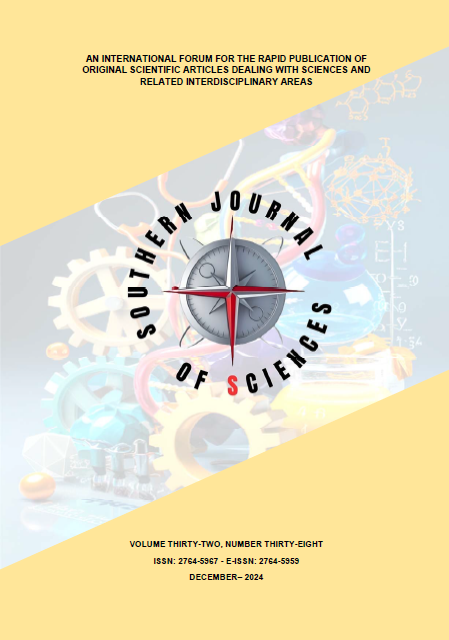SUSTAINABILITY, INNOVATION, AND INTEGRATION: PROFESSOR RIBAMAR'S VISION FOR BRAZIL'S CHEMISTRY PROFESSION
Background: The interview with Professor José de Ribamar, conducted by Luís de Boni, addresses various aspects of his career and contributions to chemistry in Brazil. The conversation includes his experiences in teaching, research, and university administration, as well as his role as President of the Federal Council of Chemistry (CFQ). Aims: The primary aim of the interview is to highlight Professor Ribamar's achievements and challenges throughout his career, and to explore his views on chemistry and its impact on scientific and educational development in Brazil. Methods: The interview was conducted in a question-and-answer format, allowing Professor Ribamar to share his experiences and insights in a detailed and personal manner. The interview was recorded, transcribed, and is available in both text and video formats. Results: Professor Ribamar detailed his academic and professional journey, including his undergraduate and graduate studies in chemistry, his contributions as a professor at the Federal University of Maranhão (UFMA), and his initiatives as a course coordinator and department head. He also discussed the impact of his research and his vision for the future of chemistry, emphasizing the importance of artificial intelligence and algorithms in predicting chemical models. Discussion: The interview provided a comprehensive overview of Professor Ribamar's contributions to chemistry in Brazil. He emphasized the importance of education and ongoing research for scientific advancement, as well as the need to adapt to new technologies. The discussion also addressed the challenges the scientific community faces and the importance of interdisciplinary collaboration. Conclusion: Professor José Ribamar has significantly promoted and developed chemistry in Brazil in academia and public administration. His career illustrates the importance of dedication to education and research, and his reflections offer valuable lessons for future generations of scientists and educators. The interview serves as a testament to his lasting impact on the scientific community.
Read ArticleEVALUATION OF THE EFFECTIVENESS OF TREATMENT OF THE ORAL MUCOSA WITH PHYTO-OINTMENT BASED ON PHYTOECDYSTEROIDS
An indicator of the health of the human body in the state of the oral mucosa. Mechanical and chemical factors constantly influence it. At the first stage of the study, a comparative analysis of the frequency of various forms of traumatic injuries of the oral mucosa was carried out. The distribution of patients into groups was also carried out, depending on the medicinal product used. Then clinical examinations were carried out. After that, the therapy of traumatic erosive and ulcerative lesions of the oral mucosa began. The developed method for treating traumatic lesions of the oral mucosa with medicine based on phytoecdysteroids provides for eliminating the traumatic factor, applying ointment based on phytoecdysteroids to the dried out focus twice a day. The use of phyto-ointment leads to complete repair of traumatic erosive and ulcerative lesions of the oral mucosa on average by the eighth day from the start of treatment; a similar effect with the use of "Solcoseryl dental adhesive paste" is achieved by the tenth day, and the gel "Cholisal Dental" - at a later date, which is confirmed in this study. The most significant positive effect on the level of quality of life associated with the effectiveness of treatment of traumatic erosive and ulcerative lesions of the oral mucosa in comparison with the dental “Solcoseryl dental adhesive paste” and the gel “Cholisal Dental” is exerted by phyto-ointment, where a decrease in the total points was recorded. When conducting routine examinations of patients, it is necessary to pay attention to the oral mucosa damage. Moreover, in treating traumatic injuries of the oral mucosa, it is recommended to use phytoointment, which contains phytoecdysteroids.
Read ArticleEXTRACTION AND CHARACTERIZATION OF CURCUMIN FROM TURMERIC RHIZOMES GROWN IN MÉRIDA, VENEZUELA
The extraction of naturally occurring compounds is one of the fastest-growing industries because of its benefits against its synthetic analogs. Environmental protection must require the use of natural products instead of chemicals to minimize pollution. Thus, this investigation studies the use of some natural product, as curcumin, as naturally occurring acid‐base indicators. Curcumin can be used as acid-base indicators since it was found that it possesses pH-dependent solubility. Curcumin, the major active component of turmeric, Curcuma longa (Zingiberaceae), is used as a spice in curry and as a coloring agent in yellow mustards, cosmetics, pharmaceuticals, and hair dyes. In this research, the main compound colored rhizome of turmeric (Curcuma longa) cultivated in Mérida, Venezuela, is extracted: Curcumin (C21H20O6) (1E,6E)-1,7-bis(4-hydroxy-3-methoxyphenyl)-1,6-heptadiene-3,5-dione, in a yield of 3.42% after 8 hours of extraction using soxhlet extractor system with organic solvents (hexane and ethanol). The thin-layer chromatography and column performed separation and purification using a mobile phase, a mixture of chloroform-hexane 3:2. The dye was characterized by spectroscopic analysis of visible ultraviolet (UV-Vis) and infrared (IR), in addition to his studio in steering sensitivity as an acid-base indicator. This dye is useful as an acid-base indicator in strong acid-strong base volumes and did not require large amounts of it as it has high sensitivity. The results indicate that curcumin as an acid-base indicator allows the development of new standards in different chemistry fields that require this type of analysis.
Read Article